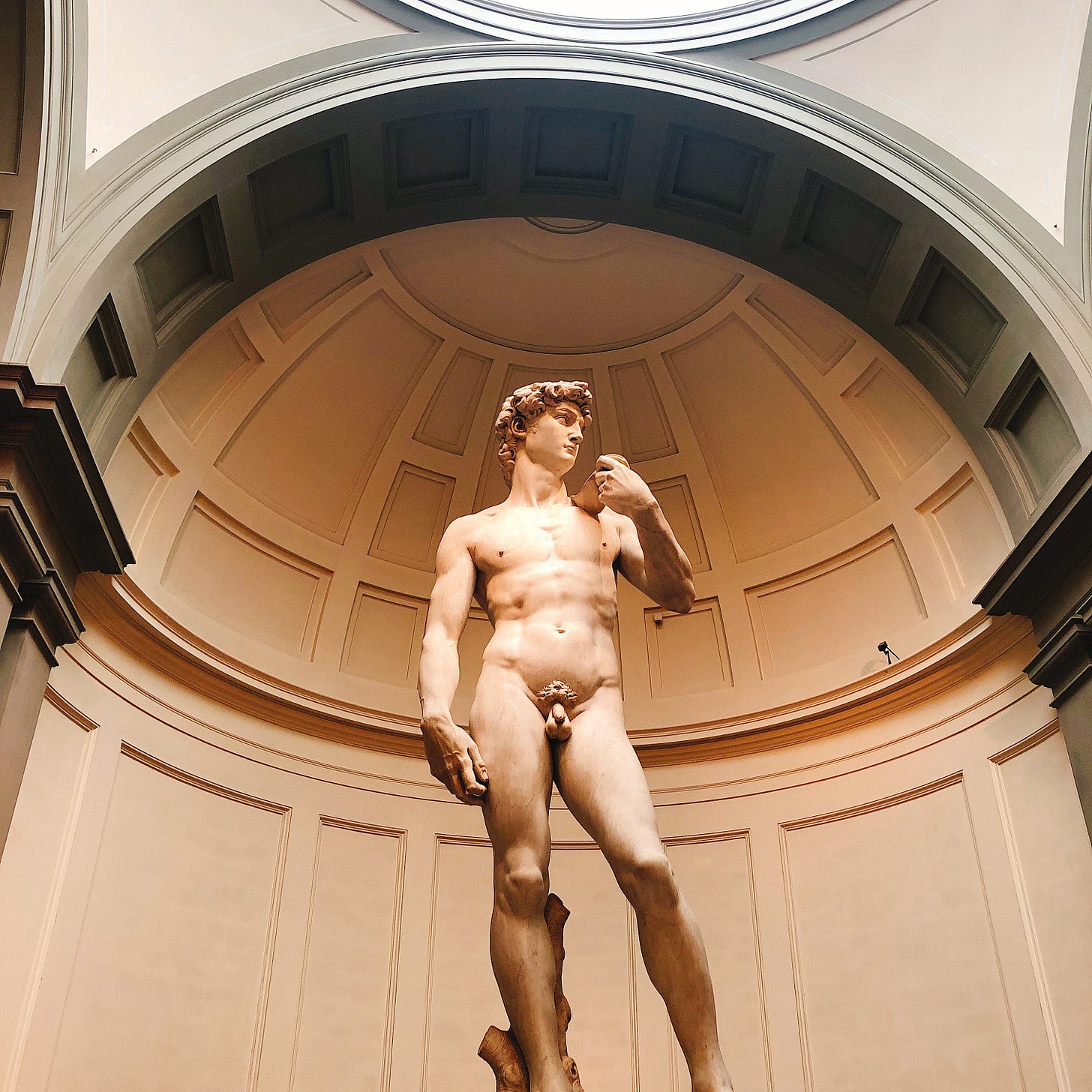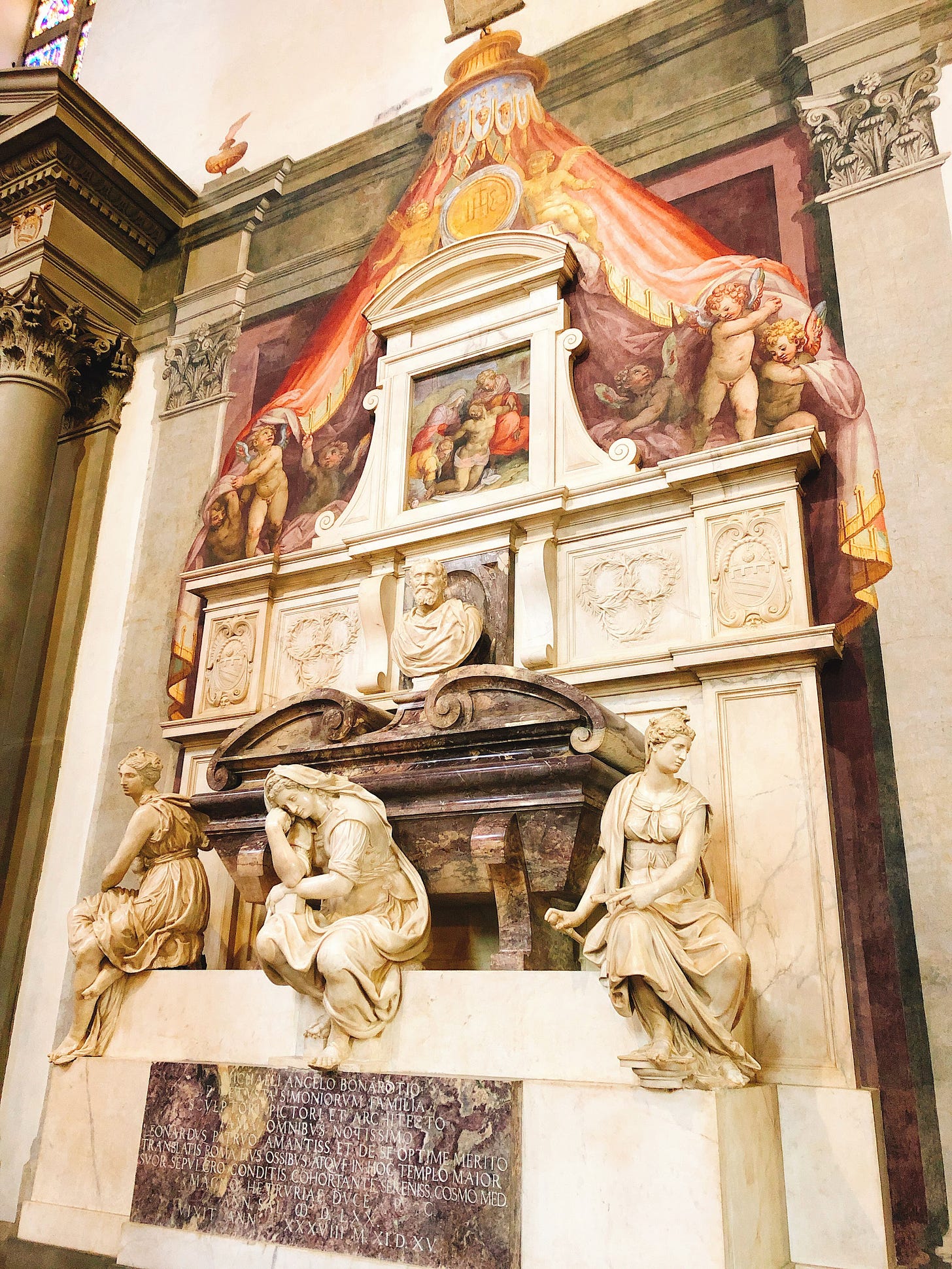How to Make Sure You Actually Get Into the Museums (and Churches) You Dream About
Timing, tickets, and a little grace: the true key to Italy’s treasures
When you’re planning a trip to Italy, it’s easy to assume that once you have tickets in hand, you’re set. But I’ve learned the hard way that entry isn’t always guaranteed. Between jetlag, delayed flights, confusing entry requirements, and unexpected closures, it’s shockingly simple to miss the very experiences you traveled across the world to see.
I’ve had close calls, and some not-so-close ones, that taught me how important it is to understand entry rules before you go.
The Day I Almost Missed David
On one trip, my flight into Florence was delayed by an entire day. My carefully planned morning slot at the Accademia to see Michelangelo’s David disappeared before I’d even landed. By some miracle, the staff allowed me in later, but that was pure luck. In peak season, especially when the museum is at capacity, “sorry, you’re too late” is often the only answer.
And if that wasn’t stressful enough, the same trip reminded me of another blind spot: museum closing days. With my schedule suddenly compressed into fewer days, I decided to bump our Uffizi visit back by 24 hours. But I hadn’t checked the calendar. The day we showed up? Monday. The Uffizi is closed on Mondays. Even if it had been open, I later realized, I wouldn’t have been able to just walk in. I would have needed a timed ticket. Two big lessons in one week.
When St. Mark’s Basilica Shut Its Doors
Venice taught me another hard truth: even churches operate with timed entry. I had tickets for St. Mark’s Basilica, but we missed our slot by nearly an hour thanks to a jetlagged toddler. In desperation, I approached three different staff members that same morning, pleading for grace. Each time, I was told no. Only on the third attempt, stroller in hand and toddler in tow, did someone finally wave us through.
It was humbling and I was grateful, but it also showed me that I can’t expect leniency. The rules are the rules, and with high crowds, exceptions are rare.
Learning the Hard Way at the Uffizi
Then came the Vasari Corridor, newly reopened after years of closure. I had tickets and thought I was ahead of the game. We entered the Uffizi about 15 minutes before our tour time, thinking that would be enough. What I didn’t realize is that the corridor tour begins at the far end of this enormous museum. To reach the meeting point, you actually need to allow about two hours of entry time.
Within minutes, I was being scolded by staff for cutting it far too close. And yet again, the stroller saved me. A guide noticed, flagged me down, and whisked us through with the master key to the elevator. Without that stroke of luck, we would have missed the corridor entirely.
Santa Croce: A Different Kind of Surprise
Not all churches require timed tickets, but they still come with their own rules. I once tried to visit Santa Croce in Florence on a leisurely afternoon, only to realize it was Tuesday, the one day of the week they’re closed. Entry here isn’t timed, but it is ticketed, and you still need to account for opening days.
And here’s a crucial detail people often overlook: dress code. Churches across Italy will turn you away if your shoulders or knees are uncovered. It doesn’t matter if you’ve paid or if you’re holding a timed entry slip. If you’re not dressed appropriately, you won’t be let in. I’ve watched more than one traveler get turned away at the door.
Buying Tickets: Where (and Where Not) To Book
Here’s something I wish more people knew:
Buy direct whenever possible. The official museum websites are the only places where the museum itself sells tickets. That means you’ll know exactly what you’re getting, and your ticket will be valid at the door.
Third-party sites (like Viator) do sell tickets, but many of these are actually resold bundles. Often, you’ll have to meet a representative at a pickup point outside the museum to collect a voucher, and only then can you line up for entry. It creates confusion and burns time you may not have.
Tours vs. tickets. Third-party platforms can be great if you’re booking a guided tour, but if you just want a ticket, stick to the official site.
The bottom line: if you want the simplest, most reliable experience, go direct. If you want additional context, book a licensed guide or group tour through a reputable provider. But don’t get caught buying what looks like an official ticket on a reseller’s page, only to find yourself standing in the wrong line.
Lessons for Travelers
After all these near-misses and moments of grace, I’ve learned:
Check opening days. Museums and churches don’t all share the same weekly rhythm. The Uffizi is closed Mondays. Santa Croce is closed Tuesdays. St. Peter’s Basilica may restrict entry during papal events. Across the country, other museums and churches will have their own patterns of closures, sometimes seasonal. Always confirm before building your itinerary, because nothing feels worse than showing up at locked doors.
Respect timed entries. Tickets are usually issued in 15-minute increments, and staff enforce those times strictly. Arriving late—even by a few minutes—can mean being turned away, and in peak season there’s rarely room to slide you in later. Plan to arrive well ahead of your time slot, and treat your entry time as a fixed appointment, not a suggestion.
Book well in advance. For the most popular sites (the Uffizi, Accademia, Colosseum, Vatican Museums, St. Mark’s Basilica), tickets can sell out weeks or even months ahead during high season. If you know your travel dates, book as soon as possible, ideally when you’re first planning your trip. Last-minute tickets are rare in summer, and relying on them can mean missing out altogether.
Account for security. Timed entry doesn’t mean you’ll walk straight in. Bag checks and metal detectors are standard at major sites, and the security line is often where delays happen. Build in extra time, especially during summer or on weekends when queues wrap around buildings.
Special access comes with special rules. Tickets for special experiences often come with stricter requirements. For example, the Vasari Corridor requires you to enter the Uffizi two hours before your corridor time slot, since the meeting point is deep inside the museum. Read the fine print carefully, and assume that anything labeled “special” or “exclusive” will require extra steps.
Define your goals. How you book should match what you want from the experience. If you’re happy to wander and soak in the atmosphere, a simple ticket works. If you want history and context, add an audio guide or book a small-group tour. If you’re the type to ask a lot of questions or want a personalized pace, a private guide is worth the investment.
Accessibility matters. If you’re traveling with a stroller or wheelchair, logistics can be tricky. Museums like the Uffizi or Vatican have elevators, but they aren’t always obvious or easy to access. A guide who knows the layout can save you frustration by leading you straight to the right routes.
Churches aren’t exempt. Don’t assume places of worship are wide open to the public. St. Mark’s Basilica and Santa Croce both require tickets, have opening-day restrictions, and operate with crowd limits just like museums. Treat them with the same preparation you would a major gallery or archaeological site.
Dress appropriately. Churches especially enforce dress codes: shoulders and knees must be covered. Even if you’ve pre-booked a ticket, you will be turned away at the door if you aren’t dressed correctly. A lightweight scarf or shawl in your bag is a simple way to ensure you won’t be denied entry unexpectedly.
Buy tickets carefully. Many third-party sources (Viator, GetYourGuide, etc.) require you to collect a voucher from a different location before entering the museum, which adds confusion and wasted time. Purchasing directly from the official museum website is always safest, though the sites are often only partially translated and can be tricky to navigate. Tours often include entry, so if the process feels overwhelming, opting for a guided experience can simplify things.
Free entry days can cost you time. Many of Italy’s state-run museums and archaeological sites waive admission on the first Sunday of each month, and sometimes on national holidays like April 25, June 2, or November 4. While the idea of free entry is appealing, the reality is long lines, suspended timed entry systems, and very crowded galleries. If you have flexibility and patience, it can be worth it. But if your time is limited, the hours lost in line may not justify the savings.
Don’t Cram Your Schedule
The final and most important lesson? Don’t overstuff your days. Even the best-planned itinerary can unravel if you miss a slot or face a two-hour wait. Plan fewer things, but plan them better. Give yourself breathing room.
Because when you do finally make it inside, whether standing before David, gazing at St. Mark’s mosaics, or wandering Santa Croce, you’ll be grateful you gave yourself the time and space to actually be present.



